Ditapis dengan
E-book Origami : Collection Near 300 Models from Internet
This e-book contains origami collection models.
- Edisi
- -
- ISBN/ISSN
- -
- Deskripsi Fisik
- 990 hlm
- Judul Seri
- -
- No. Panggil
- 736.9 CSE o
E-book The Virtuoso-Pianist Part 1
Stretch between the fifth and fourth fingers of the left hand in ascending, and the fifth and fourth fingers of the right hand in descending. For studying the 20 exercises in this First Part, begin with the metronome set at 60, gradually increasing the speed up to 108; this is the meaning of the double mark at the head of each exercise. Lift the fingers high and with precision, playing each not…
- Edisi
- -
- ISBN/ISSN
- -
- Deskripsi Fisik
- -
- Judul Seri
- -
- No. Panggil
- 786.2 HAN t
E-book What is Photography : A Beginner's Guide
This e-book contains beginner's photography guide.
- Edisi
- -
- ISBN/ISSN
- -
- Deskripsi Fisik
- -
- Judul Seri
- -
- No. Panggil
- 770 GLO w
E-book YMCA Gymnastics Handbook
Gym bube is a fun introduction to your little one's gymnastics experience. This parents/caregiven assisted class focuses on play based learning in our fun filled gymnastics play areas. Your child will develop their fine motor skills and movement as they enjoy gripping, swinging, bending and crawling.
- Edisi
- -
- ISBN/ISSN
- -
- Deskripsi Fisik
- -
- Judul Seri
- -
- No. Panggil
- 796.44 YMC y
E-book Boxer Prime
This e-book contains boxing's brief practice.
- Edisi
- -
- ISBN/ISSN
- -
- Deskripsi Fisik
- 32 hlm
- Judul Seri
- -
- No. Panggil
- 796.83 DAR b
E-book Lawn Tennis
When planning to build a new tennis court then the design and specification of the size and dimensions will be outlined which will change depending on budgets, cost restraints or physically the size restraints onsite. Some projects might only have the space for an 18m x 36m, so although it doesn’t meet the championship size it is more than the minimum recommended that is set out by the ITF. T…
- Edisi
- -
- ISBN/ISSN
- -
- Deskripsi Fisik
- 68 hlm
- Judul Seri
- -
- No. Panggil
- 796.342 SPO l
E-book Regulations of the Padel Game
This rectangle is divided in half by a net. On either side of and parallel to the net at a distance of 6.95 m are the service lines. The area between the net and the service lines is divided in half by a perpendicular line called the central service line. The central service line will extend 20 cm beyond the service line. When referring to surface and line layout, the two halves of the court mu…
- Edisi
- -
- ISBN/ISSN
- -
- Deskripsi Fisik
- 35 hlm
- Judul Seri
- -
- No. Panggil
- 794 IPF r
E-book Chelsea Football Club
When we undertook the task of reviewing the clubs identity and its brand values it was clear to us all that the lack of reference to Chelsea FC's heritage was evident. It was always important therefore that history played a big part in any development we decided to do. The result is a set of brand values and a new club badge that everyone involved with the club should be proud of. A Centenary m…
- Edisi
- -
- ISBN/ISSN
- -
- Deskripsi Fisik
- 57 hlm
- Judul Seri
- -
- No. Panggil
- 796.334 TEA c
E-book Biscuit Storybook Collection
This e-book contains dog's story named Biscuit.
- Edisi
- -
- ISBN/ISSN
- -
- Deskripsi Fisik
- 181 hlm
- Judul Seri
- -
- No. Panggil
- 741.5 CAP b
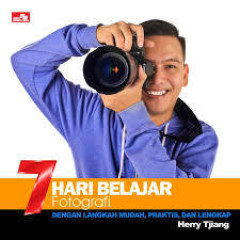
7 Hari Belajar Fotografi
Buku ini dapat dipelajari dalam waktu 7 hari. Dilengkapi contoh dan foto yang menarik dari sembilan negara koleksi Herry Tjiang (Turki, Hongkong, Korea, China, Singapura, Macau, Vietnam, Kamboja, dan Indonesia). Selain mendapatkan pelajaran fotografi, mata anda akan dimanjakan dengan foto-foto menarik dari dalam dan luar negeri. Ditulis oleh fotografer profesional yang sudah 15 tahun berkecimp…
- Edisi
- Ed. Revisi, Cet. 7
- ISBN/ISSN
- 9786020271385
- Deskripsi Fisik
- 156 hlm; 20 x 20 cm
- Judul Seri
- -
- No. Panggil
- 771 HER t
Bothekan Karawitan 2
Tidak jauh berbeda dengan edisi sebelumnya, Bothekan Karawitan 2 ini juga merupakan kumpulan cerita pengalaman penulis selama lebih dari 50 tahun sejak mulai belajar menabuh gamelan, kemudian ikut menabuh, membicarakan, dan membuat gendhing atau komposisi baru. Tulisan ini sekedar perwujudan dari usaha mengurangi rasa bersalah penulis dan dosa terhadapk karawitan, dunia yang menghidupinya. Dala…
- Edisi
- -
- ISBN/ISSN
- 979821756X
- Deskripsi Fisik
- xix + 358 hm; 14 x20 cm
- Judul Seri
- -
- No. Panggil
- 781.621 SUP b
Bothekan Karawitan 1
Sampai beberapa waktu yang lalu, di rumah-rumah keluarga Jawa, hampir semua keluarga memiliki benda yang berfungsi sebagai wadah, berupa rangkaian kotak-kotak kecil yang digunakan untuk menyimpan rempah-rempah, tumbuhan, biji-bijian, bunga, dedaunan kering. Produk tumbuhan yang disebut empon-empon itu, sewaktu waktu dapat diramu dan digunakan untuk menyembuhkan berbagai macam penyakit. Sesuai n…
- Edisi
- -
- ISBN/ISSN
- 979970717
- Deskripsi Fisik
- xi + 150 hlm; 14 x 20 cm
- Judul Seri
- -
- No. Panggil
- 781.621 SUP b
E-book Snow White and the Seven Dwarfs : New Perspectives on Production, Rece…
To undertake a scholarly project on the Wonderful World of Disney, in particular one focused on the historical, cultural and artistic significance of its celebrated cel-animated feature film Snow White and the Seven Dwarfs (David Hand, 1937), is an endeavour that often feels like jumping headlong ‘into burning coals’. Over eighty years after its ini…
- Edisi
- -
- ISBN/ISSN
- 9781501351198
- Deskripsi Fisik
- 337 hlm
- Judul Seri
- -
- No. Panggil
- 778.53 AKC s
E-book Frame by Frame
Imagine studying a building not by walking its hallways or perusing its blueprints, but by examining each of its bricks: the pockmarks produced by air bubbles in the clay, the whorls of reds and browns, the trowel’s impressions in the mortar. Imagine evaluating a mosaic not for the bigger picture but for the glint of indi-vidual tesserae. Or imagine not watching a film but looki…
- Edisi
- -
- ISBN/ISSN
- 9780520972773
- Deskripsi Fisik
- 278 hlm
- Judul Seri
- -
- No. Panggil
- 701 FRA f
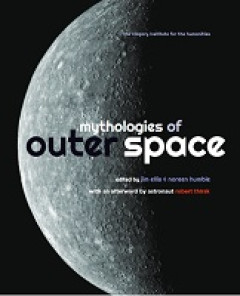
E-book Mythologies of Outer Space
Every culture and society has read stories in the night sky. From the careful attention of astronomers across all times and all parts of the world to the search for alien life, the stories found in the shapes of constellations to the expansive imaginings of science fiction, there has always been life up there, at the very least, for our imaginations. Mythologies of Outer Space brings together a…
- Edisi
- -
- ISBN/ISSN
- 9781773855875
- Deskripsi Fisik
- 217 halaman, ilus.
- Judul Seri
- -
- No. Panggil
- 704.9 ELL m
E-book Small Forgotten Places in the Hearth of Cities
The city is the womb of our history and our civilisation. It is the largest work of art ever created by humanity. The city is «the supremely human achievement» (Lévi-Strauss, 1973: 124) and the driving force of the development of thought, progress and social accomplishments. Over time it has become the main place of production, exchange and the consump-tion of goods; …
- Edisi
- -
- ISBN/ISSN
- 9788855184977
- Deskripsi Fisik
- 159 hlm
- Judul Seri
- -
- No. Panggil
- 725 LAU s
E-book Realist Cinema as World Cinema : Non-cinema, Intermedial Passages, Tot…
This book is about f ilms and f ilmmakers committed to reality. For them, the world is not a mere construct or discourse, but made of people, animals, plants and objects that physically exist, thrive, suffer and die. They feel part of, and responsible for, this material world and want to change it for the better. ‘Realism’, this book argues, is what def ines these f ilms’ mode of producti…
- Edisi
- -
- ISBN/ISSN
- 978946298751
- Deskripsi Fisik
- 304 hlm
- Judul Seri
- -
- No. Panggil
- 778.53 NAG r
E-book Post Cinema : Cinema in the Post-art Era
For some time now, in newspapers and books, a series of words keep ap-pearing that begin with the pref ix “post-.” As for these new words, the key to understanding seems to be a semantics of ambiguity. Post does not indicate something absolutely different but something in-between: postcapital-ism would be a new phase of capitalism; postmodernism, a new f igure of modernism; and post-history…
- Edisi
- -
- ISBN/ISSN
- 9789463727235
- Deskripsi Fisik
- 367 hlm
- Judul Seri
- -
- No. Panggil
- 778.53 CHA p
E-book Virtual Museums – A Plea : Around the Clock, Around the World
igitalisation and virtual worlds are increasingly permeating the cultural sector and the creative industries. When it is difficult for cultural offerings to find their audience, they can or must actively reach out to their audience. This also applies to museums, which can find and retain audiences in different ways and with different formats. Even a virtual museum is fundamentally a museum. …
- Edisi
- -
- ISBN/ISSN
- 9783422802377
- Deskripsi Fisik
- 103 hlm
- Judul Seri
- -
- No. Panggil
- 708 VIR v
E-book Cities and Affordable Housing
The shortage of affordable housing in cities is one of the most significant global challenges. It affects 1.6 billion people ( one- third of urban population) and is a key priority for policy change identified by the United Nations in the New Urban Agenda ( Tsenkova, 2016). Globally, cities and central governments have championed housing strategies and action plans, with a strong…
- Edisi
- -
- ISBN/ISSN
- 9781003172949
- Deskripsi Fisik
- 319 hlm
- Judul Seri
- -
- No. Panggil
- 712 AND c
E-book Staging Interspaces in Contemporary British Theatre : Environment and …
The research project “Performing Interspaces: Social Fluidities in Contemporary Theatre”, whose primary output is this monograph, began as an imperative to account for spaces that are awkward, evade attention, or, when they receive it, rarely do so because they produce feelings of desirability, warmth, or contentment. These spaces are sometimes …
- Edisi
- -
- ISBN/ISSN
- 9783031548925
- Deskripsi Fisik
- 312 hlm
- Judul Seri
- -
- No. Panggil
- 792 ANG s
E-book Architectures of Resistance : Negotiating Borders Through Spatial Prac…
On March 1, 2020, Greece closed its borders, denying refugees the right to seek political asylum, a reaction to Turkey’s decision to strategically refuse its role as gatekeeper to the European Union. A few weeks later, Italy, France, Belgium, and Spain closed their borders as the global COVID-19 pandemic spread. China had already closed its borders a few wee…
- Edisi
- -
- ISBN/ISSN
- 9789461665522
- Deskripsi Fisik
- 287 hlm
- Judul Seri
- -
- No. Panggil
- 720.4 FOR a
E-book Urban Blue Spaces : Planning and Design for Water, Health and Well-Being
This book came about as a major dissemination output of the BlueHealth Project (https://bluehealth2020.eu), a large, integrated interdisciplinary research project carried out under the European Union Horizon 2020 Research Frame-work Programme between 2016 and 2020. The project took an international and innovative, interdisciplinary and cross-sectoral approach to heal…
- Edisi
- -
- ISBN/ISSN
- 9780429056161
- Deskripsi Fisik
- 507 hlm
- Judul Seri
- -
- No. Panggil
- 711.4 BAL u
E-book Discord : Thinking Sound through Agential Realism
Thinking sound is an activity. Thinking with sound; thinking about sound; thinking through sound: these are all modalities of living with sound as a physical, vibrating reality. Because sound is matter in motion — resonating and reverberating — it resists conceptualization as an object or as a static concept. It cannot be held in a container but rather …
- Edisi
- -
- ISBN/ISSN
- 9781685710477
- Deskripsi Fisik
- 147 hlm
- Judul Seri
- -
- No. Panggil
- 780.72 TOK d
E-book Ecocinema Theory and Practice 2
Struggles over naming our epoch of climate change – Anthropocene? Capitalocene? – are symptomatic of the growing recognition that ecology and economy can no longer be separated: that indeed, they have always been impli-cated in one another. For flm studies, this recognition necessitates adding to early ecocritical concerns with what flm does, a renewed inquiry into how …
- Edisi
- -
- ISBN/ISSN
- 9781003246602
- Deskripsi Fisik
- 269 hlm
- Judul Seri
- -
- No. Panggil
- 778.53 ABA e
E-book Early Civilization and the American Modern : Images of Middle Eastern …
In the 1890s, the eccentric American businessman Franklin Webster Smith proposed grand new ‘National Galleries of History and Art’ for Washington, DC. A rendering of his imagined project has the vertigo-inducing scale of the architectural proposal that was destined from its inception to remain unrealized (Figure 1.1). Imagine that you stand at the he…
- Edisi
- -
- ISBN/ISSN
- 9781800087200
- Deskripsi Fisik
- 354 hlm
- Judul Seri
- -
- No. Panggil
- 724.5 MIL e
E-book Music and Spirituality : Theological Approaches, Empirical Methods, an…
The composer Sir James MacMillan has called music ‘the most spiritual of the arts’, and for many people, both religious and non-religious alike, this rings true.1 But what do people mean by ‘music’ and ‘spiritual’ in this context, and what is the nature of their perceived relationship? Do certain kinds of music more readily afford spiritual experiences than others? What …
- Edisi
- -
- ISBN/ISSN
- 9781805113041
- Deskripsi Fisik
- 480 hlm
- Judul Seri
- -
- No. Panggil
- 781.7 ARN m
E-book Notions of Temporalities in Artistic Practice
Questions of time and concepts of temporality have increasingly been moving into the focus of current research. A broad timeframe is covered in the publication Temporalität in Kunst und Kunsttheorie seit 1800 [Temporality in Art and Art Theory since 1800], ed-ited by Thomas Kisser in 2011. It reflects and discusses the problem of time in images across epochs – by analysing the role of time i…
- Edisi
- -
- ISBN/ISSN
- 9783110720921
- Deskripsi Fisik
- 173 hlm
- Judul Seri
- -
- No. Panggil
- 701 CSE n
E-book Annunciations : Sacred Music for the Twenty-First Century
In Sacred Music in Secular Society, Jonathan Arnold highlights a strange phenomenon: ‘the seeming paradox that, in today’s so-called secular society, sacred choral music is as powerful, compelling and popular as it has ever been’.1 The explosion of new media through the internet and digital technology has created a new, broader audience for ‘the creative art of Renaissance polyphony …
- Edisi
- -
- ISBN/ISSN
- 9781783747283
- Deskripsi Fisik
- 397 hlm
- Judul Seri
- -
- No. Panggil
- 780.72 JAN a
E-book How Pharaohs Became Media Stars : Ancient Egypt and Popular Culture
Even today the academic world often rejects the different manifestations of contemporary popular culture as a source of study in many subjects of the humanities. In the fields of history and archaeology its role is, however, fundamental to the framework of research into cultural reception. In this respect, as defined by Sonna and Illarraga (2016: 9-10):Cines, series, películas, …
- Edisi
- -
- ISBN/ISSN
- 9781803276274
- Deskripsi Fisik
- 261 hlm
- Judul Seri
- -
- No. Panggil
- 776 PIC h
E-book Reading the Juggler of Notre Dame : Medieval Miracles and Modern Remak…
Part 1 of this collection enables readers to immerse themselves in a generous cross section of weird and wonderful written materials. All these constituents relate to the thirteenth-century French tour de force typically called “Our Lady’s Tumbler.” To set the stage, the opening subsection offers a brand-new, heavily annotated translation of the poem and the exemplum re…
- Edisi
- -
- ISBN/ISSN
- 9781800643703
- Deskripsi Fisik
- 470 hlm
- Judul Seri
- -
- No. Panggil
- 704.9 ZIO r
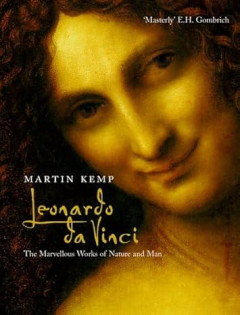
E-book Leonardo da Vinci: The Marvellous Works of Nature and Man
This masterly account of Leonardo da Vinci and his vision of the world has long been recognized as the classic treatment of the Renaissance giant, offering unparalleled insight into Leonardo's intellect and vision at every stage of his artistic career. Martin Kemp, one of the world's leading authorities on Leonardo, takes us on a mesmerizing journey through the whole span of the great man's li…
- Edisi
- Revd. Ed.
- ISBN/ISSN
- 9780192807250
- Deskripsi Fisik
- 429 halaman, ilus.
- Judul Seri
- -
- No. Panggil
- 709.2 KEM l
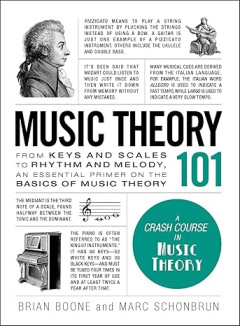
E-book Music Theory 101: From Keys and Scales to Rhythm and Melody, an Essent…
From classical to hard rock, and jazz to hip hop, music is constantly evolving, but many of the basics have stayed the same. Understanding these basics is key to becoming a successful musician and well-rounded music lover. Music Theory 101 covers everything novice musicians and lifelong learners need to know, including: -How to read sheet music -Understanding the construction of chords a…
- Edisi
- -
- ISBN/ISSN
- 9781507203668
- Deskripsi Fisik
- 276 halaman
- Judul Seri
- -
- No. Panggil
- 780.1 BOO m
E-book Countries and Regions : Dynamic Interconnectivity
From July 5 to 7, 2021, the second “Tsinghua Area Studies Forum” with “Areas of the World and the World in Areas” as its theme, was held by the Institute for International and Area Studies (IIAS) at Tsinghua Univer-sity in Beijing. One hundred and forty-four scholars from 13 countries and 36 universities and research institutions aroun…
- Edisi
- -
- ISBN/ISSN
- 9789819728350
- Deskripsi Fisik
- 352 hlm
- Judul Seri
- -
- No. Panggil
- 711.4 YAN c
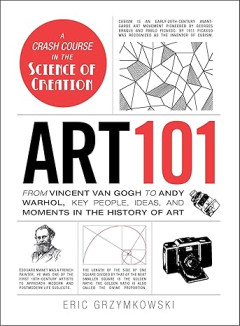
E-book Art 101: From Vincent van Gogh to Andy Warhol, Key People, Ideas, and …
Explore the beautiful and complex world of art! Too often, textbooks obscure the beauty and wonder of fine art with tedious discourse that even Leonardo da Vinci would oppose. Art 101 cuts out the boring details and lengthy explanations, and instead, gives you a lesson in artistic expression that keeps you engaged as you discover the world's greatest artists and their masterpieces. From col…
- Edisi
- -
- ISBN/ISSN
- 9781440571541
- Deskripsi Fisik
- 292 halaman, ilus.
- Judul Seri
- -
- No. Panggil
- 709 GRZ a
E-book River Cities in Asia : Waterways in Urban Development and History
Cities and water have a love-hate relationship (Feldman 2017). This is especially true of rivers in many cities in Asia, which, like cities in the rest of the world, owe their locations to rivers and the trading opportunities and water sources these rivers provided. In recent years, cities across China have been beautifying and extending their waterfronts, and cities as diverse as Singapore and…
- Edisi
- -
- ISBN/ISSN
- 9789463721851
- Deskripsi Fisik
- 296 hlm
- Judul Seri
- -
- No. Panggil
- 711.4 PAD r
E-book Victorian Alchemy : Science, magic and ancient Egypt
Thus, the fictional ‘Doctor Nosidy, scientist, mesmerist, thought- reader, and electrician’, begins his experiments into communicating with the ‘brain- ether’ of the ancient Egyptian dead.2‘The Strange Discovery of Doctor Nosidy’ is the first of several short stories that make up a collection of tales entitled The Story Hunter: or tales of the weird and wild (1896) by the B…
- Edisi
- -
- ISBN/ISSN
- 9781787358485
- Deskripsi Fisik
- 279 hlm
- Judul Seri
- -
- No. Panggil
- 704.947 DOB v
E-book Togo Mizrahi and the Making of Egyptian Cinema
We hear a band strike up festive music. We see street vendors selling their wares from carts lining a city street. A man and boy, holding hands, walk past the vendors. As they recede into a distant crowd, a pair of young men, both in Western suits and tarbooshes, stroll into and out of the frame. Two riders—one in a dark galabiya and t…
- Edisi
- -
- ISBN/ISSN
- 9780520976122
- Deskripsi Fisik
- 253 hlm
- Judul Seri
- -
- No. Panggil
- 791.43 STA t
E-book Egyptian Things : Translating Egypt to Early Imperial Rome
The Temple of Dendur stands grandly in New York’s Metropolitan Museum of Art (fig. 1). Reflecting pools and cool tan-marble floors stylishly evoke the Nile and its surroundings; an enormous semi-translucent ceiling remains a relic of 1970s mod-ernism; a vast wall of glass looks out to Central Park and E. Eighty-Fourth Street. All frame the Egyptian temple’s relocation to the former Sackler …
- Edisi
- -
- ISBN/ISSN
- 9780520402195
- Deskripsi Fisik
- 261 hlm
- Judul Seri
- -
- No. Panggil
- 732.8 KEL e
E-book Powers of Divergence : An Experimental Approach to Music Performance
In approaching this introductory text, I am struck by the difficulty of a begin-ning. When painter Emilio Vedova was teaching at the Accademia di Belle Arti in Venice and one of his pupils would be paralysed in front of the empty canvas, he would dip a brush in the paint and lash it against the white surface. Was the pupil facing the void, and was Vedova’s gesture int…
- Edisi
- -
- ISBN/ISSN
- 9789461662514
- Deskripsi Fisik
- 200 hlm
- Judul Seri
- -
- No. Panggil
- 780.72 DER p
E-book Theatre and Democracy : Building Democracy in Post-war and Post-democr…
This edition is a result of a longstanding collaboration between two cen-tres of applied drama, theatre education and research: the Department of Drama for Life, University of the Witwatersrand, Johannesburg, South Africa and the Department of Arts and Media Studies at the Norwegian University of Science and Technology, Trondheim. From 2017 to 2021 this collaboration has included stude…
- Edisi
- -
- ISBN/ISSN
- 9788202711825
- Deskripsi Fisik
- 287 hlm
- Judul Seri
- -
- No. Panggil
- 792 JAN t
E-book Double Jeopardy : A Critique of Seven Yuan Courtroom Dramas
an Dynasty (1260-1368) tsa-chii drama^j|j known as "p'ing-fankung-an chli jf-fcL'i* J3$c j^>\ * °r "plays of judgment reversal," all ofwhich feature double trials in which the verdict of the first judge isoverturned by that of the second. In the sense that these plays consti-tute a distinct group within the subgenre of kung-an chli '£ JjL ^£1] or"courtroom p…
- Edisi
- -
- ISBN/ISSN
- 9780472901326
- Deskripsi Fisik
- 195 hlm
- Judul Seri
- -
- No. Panggil
- 792.251 PER d
E-book Computational Drama Analysis : Reflecting on Methods and Interpretations
Computational drama analysts is the field of research that attempts to model, analyze, and interpret dramatic texts using computational methods. It is part of larger field of computational literary studies and, even more broadly, the digital humanities. Computational drama analysts is part of the current boom in quantitative data analysts methods including machine learning and artificial intell…
- Edisi
- -
- ISBN/ISSN
- 9783111071824
- Deskripsi Fisik
- 231 hlm
- Judul Seri
- -
- No. Panggil
- 792.2 AND c
E-book Television Drama from Germany : Production, Storytelling and "Quality"
The German-speaking television market is considered the third largest in the world, after the US and China. It has 72 million viewers, 37 million television households and 22 trillion euros in annual revenue (Eichner and Esser 2020, 190). As in other areas of society, a radical transformation has been unfolding across this television market for …
- Edisi
- -
- ISBN/ISSN
- 9783031606229
- Deskripsi Fisik
- -
- Judul Seri
- -
- No. Panggil
- 778.5943 KRA t
E-book Saving New Sounds : Podcast Preservation and Historiography
In March 2014, podcaster and comedian Adam Carolla initiated a crowd-funding campaign designed to “save” podcasting. A company called Per-sonal Audio LLC was suing Carolla for infringing on a patent—a “system for disseminating media content in serialized episodes” (Nazer 2018)—that it claimed gave the company exclusive rights over the very practice of distributing audio via a podcas…
- Edisi
- -
- ISBN/ISSN
- 9780472901241
- Deskripsi Fisik
- 287 hlm
- Judul Seri
- -
- No. Panggil
- 791.44 HOY s
E-book After the Miners’ Strike : A39 and Cornish Political Theatre versus …
This is the first volume of the story of a tiny theatre company in a distant part of the UK that operated like a political cell; or alternatively, of a political cell that operated as a theatre company.A39 Theatre Group came into being because of the great Miners’ Strike of 1984–85. It embraced the label ‘agitprop’ as a badge of honour. A39 was moti…
- Edisi
- -
- ISBN/ISSN
- 9781800649149
- Deskripsi Fisik
- 284 hlm
- Judul Seri
- -
- No. Panggil
- 792 FAR a
E-book Design Research in the Digital Era
The PhD in Design at Politecnico di Milano was established in 1990, exactly 30 years ago. It was Italy’s first PhD Programme on the topic, and its leading figure was Ulm School of Design former teacher and director Tomàs Maldonado. Its original name was “Doctoral Programme in Industrial De-sign and Visual Communication,” which showed the discipline’s traditional legacy as b…
- Edisi
- -
- ISBN/ISSN
- 9788835100317
- Deskripsi Fisik
- 198 hlm
- Judul Seri
- -
- No. Panggil
- 745.2 RAM d
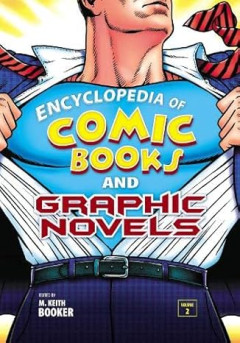
E-book Encyclopedia of Comic Books and Graphic Novels
At a time when graphic novels have expanded beyond their fan cults to become mainstream bestsellers and sources for Hollywood entertainment, Encyclopedia of Comic Books and Graphic Novels serves as an exhaustive exploration of the genre's history, its landmark creators and creations, and its profound influence on American life and culture. Encyclopedia of Comic Books and Graphic Novels focus…
- Edisi
- -
- ISBN/ISSN
- 9780313357466
- Deskripsi Fisik
- 806 halaman, ilus.
- Judul Seri
- -
- No. Panggil
- 741.403 BOO e
E-book Beethoven and the Piano : Philology, Context and Performance Practice
Czerny’s closeness to Beethoven, and his extraordinary musical abilities, have tendedto encourage confidence in him as a reliable source of information about Beethoven’sexpectations for the performance of his music. But despite his obvious reverence forBeethoven’s works, closer scrutiny suggests that he adopted a progressive rather thancuratorial position towards them: perhaps his concern…
- Edisi
- -
- ISBN/ISSN
- 9783931264963
- Deskripsi Fisik
- 424 hlm
- Judul Seri
- -
- No. Panggil
- 780.72 MIU b
E-book Wits and Interpretation : Keyboard Thoughts
According to a widely held view in 20th- Century aesthetics, a music work is equivalent to the performances that conform to a certain score? And this notion complies with at least three requirements of a satisfactory ontology of the music work, or so it seems?1Thus, although a Beethoven manuscript would command a very high price, it is not very interesting as a unique phys…
- Edisi
- -
- ISBN/ISSN
- 9783631890943
- Deskripsi Fisik
- 466 hlm
- Judul Seri
- -
- No. Panggil
- 780.72 EDL w
 Karya Umum
Karya Umum  Filsafat
Filsafat  Agama
Agama  Ilmu-ilmu Sosial
Ilmu-ilmu Sosial  Bahasa
Bahasa  Ilmu-ilmu Murni
Ilmu-ilmu Murni  Ilmu-ilmu Terapan
Ilmu-ilmu Terapan  Kesenian, Hiburan, dan Olahraga
Kesenian, Hiburan, dan Olahraga  Kesusastraan
Kesusastraan  Geografi dan Sejarah
Geografi dan Sejarah